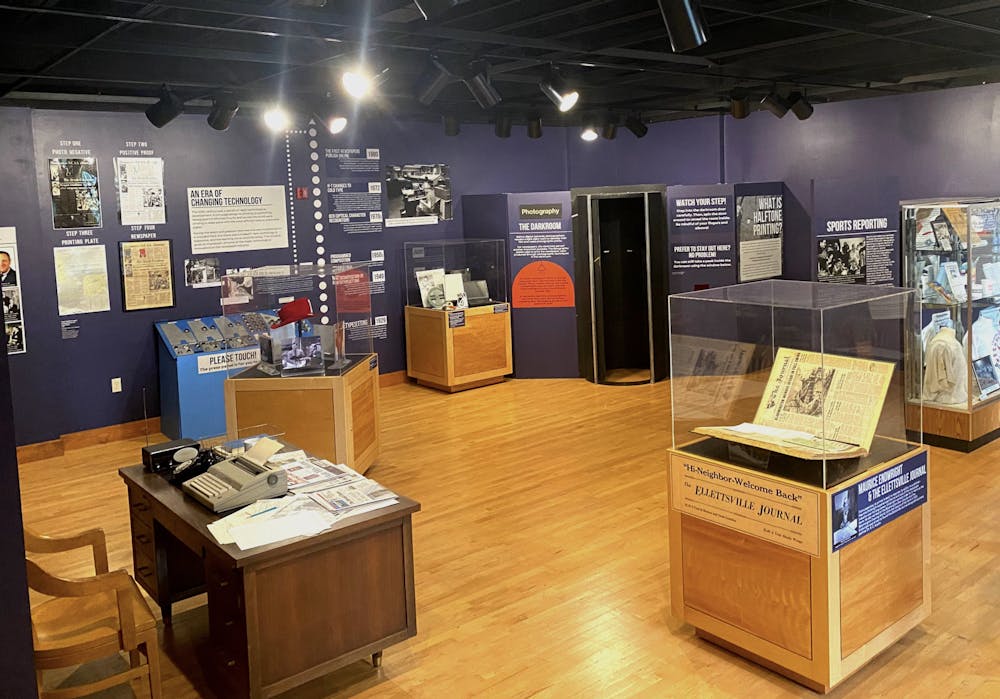The Monroe County History Center opened a new exhibit detailing Indiana’s rich history of print journalism July 18. Entitled “Breaking the News: The Past and Uncertain Future of Local Print Journalism,” the display covers publications across Indiana with a focus on Monroe County spanning from 1824 to the present day. It will be open until Dec. 30.
Newspapers are meant to chronicle the present, but who is meant to chronicle the newspapers? The Monroe County History Center steps up to the challenge, preserving an enormous portion of Indiana history that would otherwise have been lost to time.
The fruits of this endeavor will not be fully realized for years to come, but the history center has allowed the public a peek into the project.
Just inside the history center’s front entrance sits a Washington printing press dating back to 1870. The exhibit’s curator, Hilary Fleck, said the press is functional and will be used in demonstrations in the future.
The press, as well as several other artifacts, were loaned to the museum by private collector Steve Robinson. Much of the rest of the exhibit’s materials were pulled from the now-defunct Herald-Times building, an effort facilitated by Rod Spaw, who volunteers at the history center and previously worked for the Herald-Times.
Fleck said the exhibit was loosely in the works for two years, beginning when the Herald-Times offered their archives to the history center.
“They said, ‘We know you like old stuff, would you like to take a look at our old stuff?’” she said. “They could have just thrown it all away.”
“Breaking the News” spans across all three of the museum’s temporary galleries. The first room explores the earliest records of the craft in Indiana, displaying the antiquated printing techniques of the time and highlighting the early contributions of women and Black journalists to the Monroe County press.
The hallway following features an enormous timeline that details the births, deaths and consolidations of many prominent Indiana newspapers. Fleck said creating this timeline was no easy task, as incomplete preservation of newspapers leaves a lot of holes in the history.
“A newspaper is supposed to be today’s news,” she said. “The next day, it’s obsolete. There isn’t much reason to keep it around.”
The final room covers advancements in printing from roughly 1960 to the present. It shows the rapid changes in printing and photographic technology over that time period and how that affected the news process.
It ends by discussing the tentative future of the medium, nodding to the IDS’ current financial situation. With the increase of online publication, demand for print publications has changed drastically, and it’s had a marked effect on journalism as a whole.
Although it takes up much of the museum’s space, the exhibit represents only a fraction of the archived material they received. Fleck said they’d been working on archiving it for two years already and with no end in sight, will likely be continuing the project for years to come.
The museum has plans to crowdsource some of this effort, though; Fleck said one of the biggest undertakings is identifying the contents of the thousands of photographs they received, many of which had no captions.
They plan to hold monthly “What’s in the Photo?” events where the public can come to see and identify the photos. The next event is from 9-11 a.m. July 26, and the dates going forward can be found on the Monroe County History Center website.




